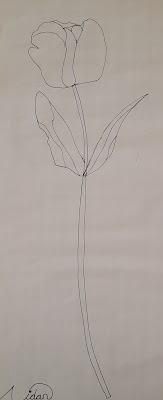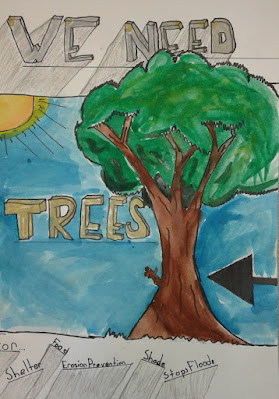Trees are vital, providing us with oxygen, clean air and water, food, shelter, medicines, and resources, while also supporting biodiversity and mitigating climate change.
My country, Canada, has a vast and abundant forest resource, covering approximately 35% of the country, and containing 9% of the world's forests. Canada is the third-most forested country in the world by area and holds a significant portion of the world's boreal and temperate forests. Across the country, Canadians have deep connections with forests—valuing, managing and using them in different ways.
For this art project, I challenged my students to illustrate, in any media, why we all need trees. We brainstormed and wrote down ideas. There are so so many!
Clean Air and Water:
Trees absorb carbon dioxide and release oxygen, improving air quality, and their roots help filter and retain water, improving water quality.
Climate Change Mitigation:
Trees absorb carbon dioxide from the atmosphere and store it, helping to combat climate change.
Soil Conservation: Tree roots help prevent soil erosion, keeping the soil healthy and fertile.
Wildlife Habitat:
Trees and forests provide habitat for a wide variety of plants and animals, supporting biodiversity.
Water Cycle Regulation:
Trees help regulate the water cycle by absorbing and releasing water, which can help prevent flooding and droughts.
Moderating Local Climate:
Trees provide shade, which can help cool down areas, and they can also act as windbreaks, protecting areas from strong winds.
Food and Resources:
Trees provide us with fruits, nuts, timber, and other resources that are used for food, shelter, and fuel.
Mental and Physical Health:
Spending time in nature, including among trees, can have positive effects on mental and physical health, reducing stress and improving mood.
Economic Benefits:
Forests and trees support local economies through tourism, timber production, and other industries.
Aesthetic and Recreational Value:
Trees and forests provide beauty and recreational opportunities, such as hiking, camping, and birdwatching.
Students sketched out their ideas on scrap paper. Then created their good copies on 12 x 18" paper. They could use any media they wanted. I love the variety of results!






























































